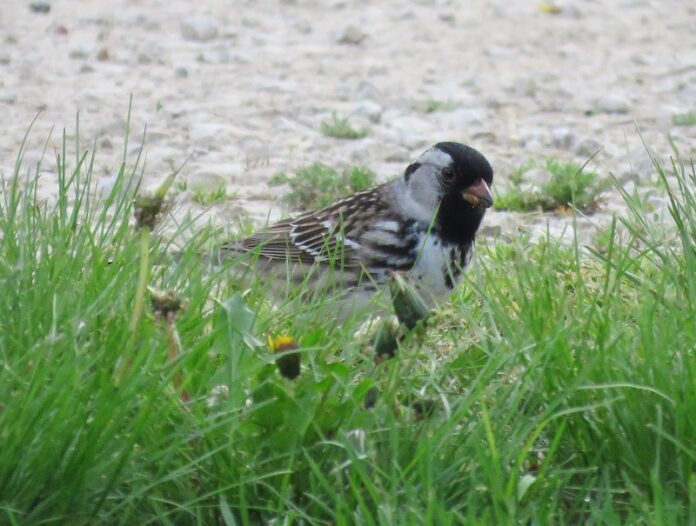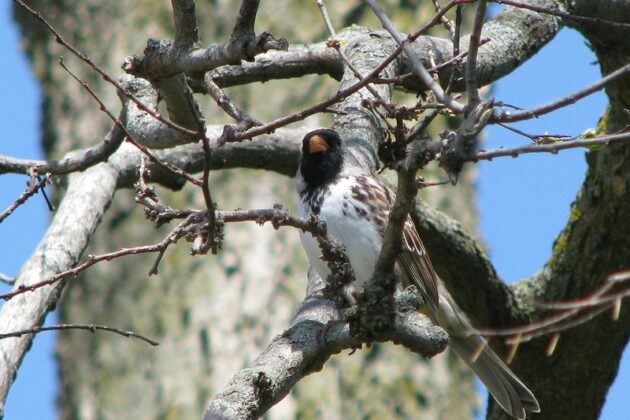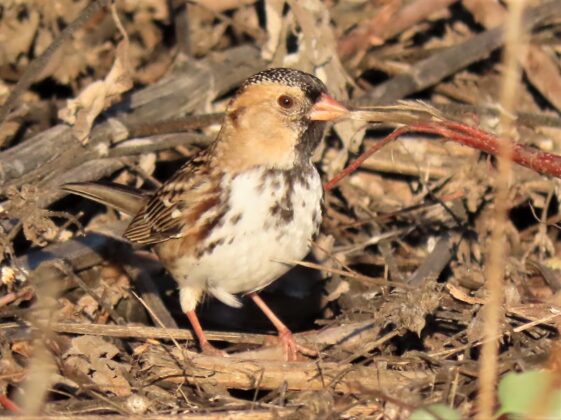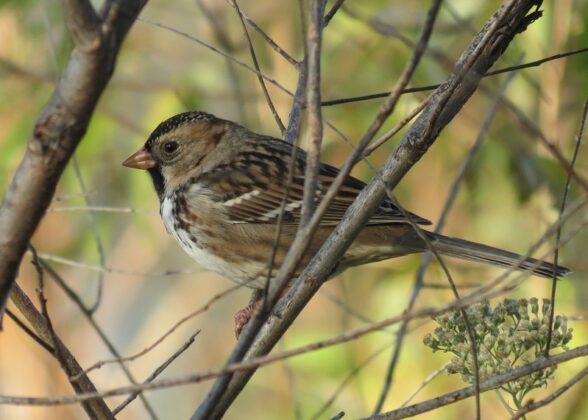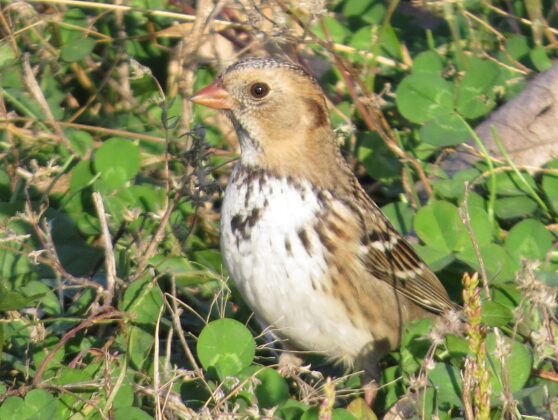There was fight taking place on my platform bird feeder.
A big stranger, a Harris’s sparrow, had flown in, and two male house sparrows were trying to drive him away. The two smaller sparrows pecked at him and hit him with their wings, but the big guy stood his ground and fought back.
After a few unsuccessful attacks the house sparrows gave up and flew away. The new arrival began eating the seeds without interruption. The Harris’s sparrow is a stout-looking bird 7.5 inches long.
That might not seem big, but he is 20% larger than the 6.25-inch-long house sparrow. It is the largest sparrow seen in Iowa.
The Harris’s sparrow is not a common winter bird in central Iowa. I only see a few of them a year. But it seems like I am seeing more of them this fall. Central Iowa is on the eastern edge of their winter home range. They are more commonly seen in southwest Iowa.
The birds’ main wintering area is a narrow strip of the western Great Plains, from southern Nebraska to Texas. In the spring, they fly more than 1,000 miles to their summer breeding ground in the northern parts of Canada.
Harris’s sparrows that have been banded by ornithologists show a strong homing instinct. Like many birds, they come back to their same territory every year. The banding studies also show that the birds have an average life span of 2.5 years. The oldest recorded Harris’s sparrow lived to be 8.5 years old.
The Harris’s Sparrow is a handsome bird. An adult has a black crown and black bib. Its chest is white, and it has a gray face with a pinkish cone-shaped bill. The bird’s tail is long and is square at the end. Its back and wings are brown like most sparrows. The males and females have similar markings.
The bird was named by the famous ornithologist John James Audubon in honor of his traveling companion Edward Harris. Audubon discovered the bird in Kansas on his western trip in 1843. He later found out that it had been identified 10 year earlier by another scientist, James Nuttall, who called the bird a morning finch.
Probably because Audubon was better known, his name for the bird is used today. But it wasn’t until 1934 that scientists from Cornell University discovered the birds’ nesting area in the Northwest Territories of northern Canada.
There they build their nests in mossy bogs and shrubby trees at the edge of the arctic tundra.
Their diet is about 90% seeds and berries. When they are raising young, they depend on insects, spiders and worms to provide the young with protein and fat for energy. They often feed in the open in small flocks and are frequently seen along the edges of gravel roads.
Harris’s sparrows feed on the ground and backyard platform feeders. They usually stay close to cover and when they are frightened, they will fly high into trees for protection from predators. This is a different behavior from most other sparrows, which fly low into shrubs or into dense grass for cover.
When Harris’s sparrows are in a flocks, there is a definite pecking order. The eldest and darkest-marked male is the dominate bird. To prove this, ornithologists bleached the head of the dominate birds and darkened the heads of young males. The result was a complete role reversal. The younger birds began to behave in a dominate manner. While the older birds that had their heads bleached were forced into more and more combative situations, and soon they began to behave like subordinates.
In the Dallas County Christmas bird count, held in December 2021, only five Harris’s sparrows were observed. None were seen in the Polk County Christmas bird count.
Although it is not a common bird in central Iowa, if you see a sparrow that looks darker and larger than other sparrows, look closely. It might be a Harris’s sparrow.



